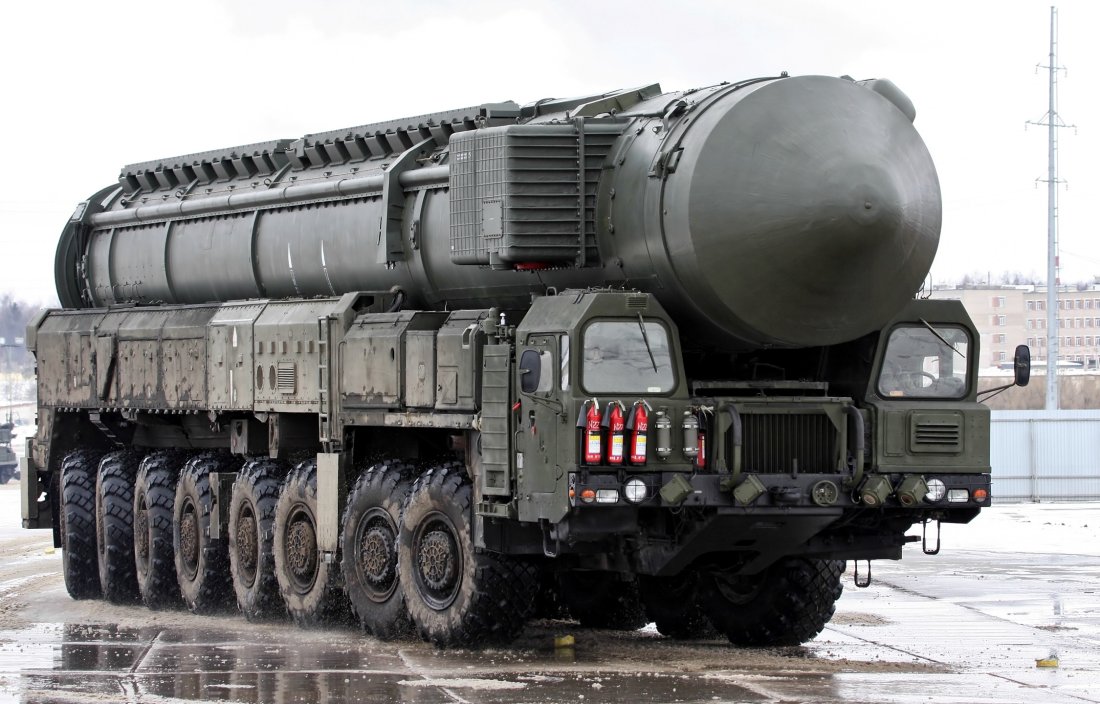
Russia Says It Will Soon Deploy Mach 20 Avangard Hypersonic Weapon
Moscow fears America's missile defenses. But does it really need to?
There is never a dull weapon in Vladimir Putin's arsenal.
On top of previous boasts of a nuclear-powered cruise missile and a nuclear-powered robot submarine with a 100-megaton warhead , Putin recently announced that Russia would soon deploy Avangard hypersonic weapons. Avangard is a boost-glide vehicle that is lofted high into the atmosphere atop an ICBM such as Russia's heavy Sarmat missile, and then glides down at hypersonic speed (faster than Mach 5). Avangard reportedly can glide down at Mach 20, and unlike the fixed trajectory of ballistic missile warheads, can maneuver to avoid anti-missile defenses. It may be armed with a single warhead of as much as 2 megatons.
"We know for certain, it’s an obvious fact and our colleagues realize it, that we surpassed all our competitors in this area," Putin said. "Nobody has precise hypersonic weapons. Some plan to test theirs in 18 to 24 months. We have them in service already."
Putin blames the need for new Russian nuclear weapons on U.S. ballistic missile defense, which Russia fears will destroy its nuclear deterrent against American attack. “Responding to the development of anti-ballistic missile systems by the U.S., we are improving our strike capabilities," Putin said. "Some are already in service, others will be deployed soon."
But what does Russia really gain from hypersonic missiles, not to mention bizarre weapons like nuclear-powered rockets? Russia has approximately 528 land-based and submarine-based ICBMs, as well as nuclear-armed bombers, only a fraction of which are needed to destroy the United States as a functioning nation. Even assuming the most paranoid Russian scenario, such as the Kremlin's fear in 1983 that the U.S. was about to launch a surprise nuclear attack , it would take only a few surviving Russian missiles to devastate the U.S.
These aren't great odds for a first strike.
Hypersonic missiles are fast and they fly through the upper atmosphere rather than outer space like ICBMs, which means they might not be detected by early warning radars designed to track rockets as they arc through space. Thus, Russian hypersonics stand a better chance than ICBMs of penetrating U.S. ballistic missile defenses.
Except the U.S. doesn't really have meaningful ballistic missile defenses. So far, the U.S. is only trying -- with limited success -- to develop a capability to shoot down a few ballistic missiles launched by a minor power such as North Korea. Despite attempts to develop an anti-ICBM shield -- the 1960s Safeguard system, Reagan's 1980 "Star Wars" program -- no sane or sensible person believes that any foreseeable missile defense system would be so leak-proof that it could stop every single incoming warhead descending on American soil at 20 times the speed of sound.
Recommended: Russia's Next Big Military Sale - To Mexico?
Recommended: Would China Really Invade Taiwan?
In other words, Russia is spending a lot of money on hypersonic glide bombs and atomic super-torpedoes that are a response to a missile defense system that doesn't exist.
And isn't likely to.
Michael Peck is a contributing writer for the National Interest. He can be found on Twitter and Facebook .
Image: Creative Commons.




Geen opmerkingen:
Een reactie posten